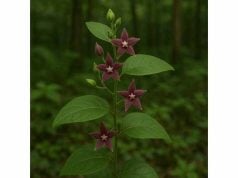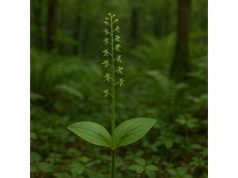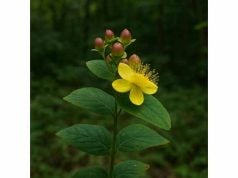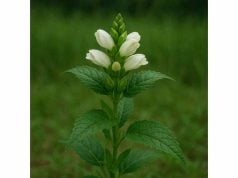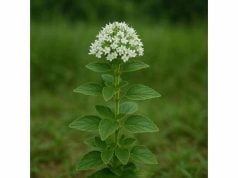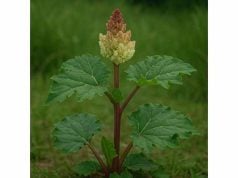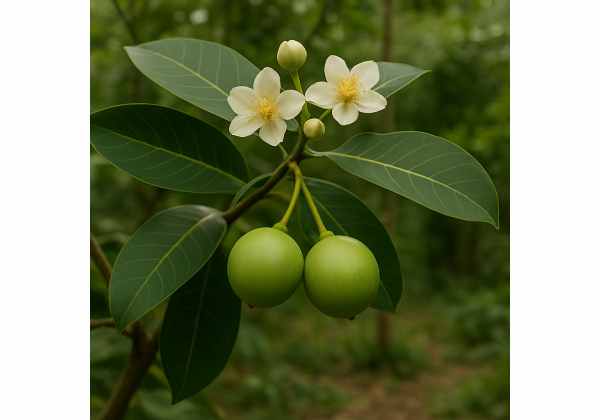
Tamanu is a tropical botanical marvel prized in traditional medicine for its potent healing properties and diverse bioactive compounds. Derived from the nuts of the Calophyllum inophyllum tree, Tamanu oil is celebrated for its remarkable skin regeneration, anti-inflammatory, antimicrobial, and antioxidant effects. Its unique constituents such as calophyllolide, inophyllums, and flavonoids contribute to its efficacy in treating wounds, burns, acne, and other inflammatory skin conditions. Widely used in aromatherapy, herbal remedies, and cosmetic formulations, Tamanu offers a natural, holistic approach to healing and rejuvenation. Embraced in both ancient healing traditions and modern therapeutics, it continues to gain popularity as a versatile natural remedy.
Table of Contents
- Botanical Profile and Identification
- Phytochemistry and Active Compounds
- Health Benefits and Essential Qualities
- Practical Uses and Safety Considerations
- Research Insights and Key Findings
- Frequently Asked Questions
Botanical Profile and Identification
Tamanu, scientifically recognized as Calophyllum inophyllum, belongs to the Calophyllaceae family and thrives in the tropical climates of the Pacific, Indian Ocean, and parts of Southeast Asia. This evergreen tree, commonly known as the “beauty leaf” tree, produces an abundant, dark green foliage and fragrant white to pale yellow flowers. The tree’s broad, glossy leaves and robust, fibrous bark are distinctive; the leaves are lanceolate with a leathery texture, while the flowers bloom in clusters and are known for their subtle, sweet aroma.
Native to coastal areas and often flourishing in sandy soils or along tidal marshes, Tamanu is adapted to withstand saline environments and periodic flooding. These ecological conditions promote its rapid growth and resilience, making it a commonly planted tree in tropical landscapes. It is not only valued for its ornamental beauty and ecological benefits such as soil stabilization and coastal protection but also for its medicinal virtues that have been utilized in traditional healing systems for centuries.
Traditional communities have long harvested the seeds or nuts of the Tamanu tree to extract the precious oil—a process steeped in cultural significance. After collection, the nuts are sun-dried, and the oil is extracted using traditional pressing techniques that help retain its natural bioactive compounds. The extraction process is meticulous and reflects the local expertise passed down through generations, ensuring that the oil maintains its potency and purity.
Modern botanical studies highlight several unique features of the Tamanu tree that distinguish it from other tropical species. For instance, its remarkable ability to regenerate after damage and its resistance to pests are attributed to the complex chemical composition of its leaves and bark. Researchers note that the natural compounds present in Tamanu serve as both defensive agents against pathogens and as promoters of the tree’s overall vigor and longevity.
The geographical distribution of Tamanu spans a diverse range of tropical islands and coastal regions, which has led to variations in its genetic makeup and chemical profile. These differences are evident in the slight variations in the oil’s aroma, color, and therapeutic potency. In some regions, the oil is known for its lighter, sweeter fragrance, while in others it retains a more resinous, intense character. This biodiversity is considered a treasure trove for both traditional healers and modern scientists exploring natural remedies.
Historically, Tamanu has played a dual role in the cultural and medicinal practices of many Pacific Island communities. It is often revered not only as a source of healing but also as an emblem of nature’s resilience and bounty. The folklore surrounding Tamanu frequently portrays it as a sacred tree whose oil can restore balance, bring beauty to the skin, and heal wounds—both physical and emotional. Such cultural narratives continue to enhance its reputation and contribute to its sustained use in natural medicine.
Beyond its medicinal applications, the Tamanu tree is valued for its ecological contributions. It helps prevent soil erosion, supports biodiversity by offering habitat and food for various wildlife species, and even acts as a natural barrier against coastal erosion. The tree’s role in the ecosystem reinforces the importance of sustainable cultivation and preservation practices to ensure that both its environmental and therapeutic benefits endure.
In conclusion, the botanical profile and identification of Tamanu reveal a plant of remarkable resilience and versatility. With its lush foliage, fragrant blooms, and robust growth in coastal regions, Tamanu is much more than an ordinary tropical tree. It is a cornerstone of traditional medicine and a vital resource in contemporary natural health practices—a true embodiment of nature’s holistic healing power.
Phytochemistry and Active Compounds
The exceptional medicinal properties of Tamanu are intricately linked to its complex phytochemical composition. Rigorous scientific investigations have identified a range of active compounds that are responsible for its potent healing effects. Below is an in-depth exploration of the primary bioactive components of Tamanu and their individual roles:
- Calophyllolide:
Calophyllolide is one of the most significant components of Tamanu oil. This naturally occurring lactone is revered for its strong anti-inflammatory and wound-healing properties. Calophyllolide is known to modulate inflammatory pathways, thereby reducing redness, swelling, and pain associated with injuries and skin conditions. Research indicates that it also promotes collagen synthesis, which is essential for skin repair and rejuvenation. - Inophyllums:
Inophyllums are a group of xanthones found in Tamanu that contribute to its antimicrobial and antioxidant effects. These compounds have been shown to inhibit the growth of certain bacteria and fungi, making them valuable in the treatment of skin infections and acne. Their antioxidant capacity further helps in neutralizing free radicals, thereby protecting cells from oxidative damage and slowing the aging process. - Coumarins:
Coumarins in Tamanu are recognized for their anticoagulant and anti-inflammatory properties. They help improve blood circulation and reduce the risk of blood clots while also possessing the ability to relieve pain and inflammation. These compounds support the overall healing process by enhancing blood flow to wounded areas, which is crucial for tissue regeneration. - Flavonoids:
The presence of various flavonoids in Tamanu contributes significantly to its antioxidant profile. These polyphenolic compounds are responsible for scavenging free radicals and preventing the oxidative degradation of cells. Flavonoids also possess anti-allergic and anti-inflammatory properties, which further enhance the therapeutic value of Tamanu oil in skin care and systemic applications. - Triterpenoids:
Triterpenoids are another important group of compounds in Tamanu. They exhibit both antimicrobial and anti-inflammatory activities, making them effective in treating a range of skin conditions including eczema, psoriasis, and dermatitis. Their role in stimulating cellular regeneration adds to the oil’s effectiveness as a natural healing agent. - Essential Fatty Acids and Lipids:
Although present in minor quantities, essential fatty acids in Tamanu oil are crucial for maintaining cell membrane integrity and overall skin hydration. These lipids facilitate the penetration of active compounds into the deeper layers of the skin, enhancing their effectiveness. They also contribute to the oil’s emollient properties, which help in soothing and softening the skin. - Polyphenols and Other Antioxidants:
Tamanu oil contains an array of polyphenolic compounds that provide additional antioxidant support. These compounds not only protect against oxidative stress but also support the body’s detoxification processes by neutralizing harmful radicals. Their synergistic interactions with other bioactive compounds enhance the overall therapeutic efficacy of the oil.
The synergy among these compounds is what makes Tamanu oil a powerhouse in traditional and modern medicine. Rather than relying on a single active ingredient, the combined effect of calophyllolide, inophyllums, flavonoids, and others creates a comprehensive healing formula that addresses inflammation, infection, oxidative stress, and tissue regeneration all at once.
Modern extraction methods—such as cold pressing and solvent extraction—aim to preserve the integrity and balance of these bioactive compounds. Maintaining a standardized profile is essential for both clinical research and commercial applications. Quality control measures ensure that the extracts consistently deliver the desired levels of active ingredients, thereby guaranteeing the oil’s efficacy.
Research has also shown that the phytochemical profile of Tamanu can vary depending on geographic location, soil composition, and cultivation practices. This natural variability underscores the importance of sustainable harvesting and standardization processes to achieve consistent therapeutic outcomes. It also presents opportunities for further research into optimizing growth conditions to enhance the production of specific bioactive compounds.
In summary, the complex phytochemistry and active compounds present in Tamanu are central to its renowned medicinal properties. Each group of compounds contributes unique benefits—ranging from anti-inflammatory and antimicrobial to antioxidant and tissue-regenerative effects. The natural synergy among these molecules underpins Tamanu’s effectiveness as a holistic healing agent, making it a valuable resource in both traditional medicine and contemporary therapeutic applications.
Health Benefits and Essential Qualities
Tamanu is esteemed for its multifaceted health benefits and distinctive qualities that support overall well-being. Its therapeutic effects extend across various physiological systems, making it a versatile remedy for a range of conditions. Here we explore the primary health advantages and core qualities of Tamanu:
Skin Regeneration and Wound Healing
Tamanu oil is perhaps best known for its extraordinary capacity to promote skin regeneration. Its anti-inflammatory and antimicrobial properties aid in the effective healing of cuts, burns, and other skin injuries. The bioactive compound calophyllolide stimulates collagen synthesis, accelerating tissue repair and reducing scarring. As a result, Tamanu oil is commonly used to treat acne, eczema, psoriasis, and other dermatological conditions. Its natural emollient properties further contribute to skin hydration, ensuring that the skin remains supple and nourished during the healing process.
Anti-Inflammatory and Analgesic Effects
Chronic inflammation is at the root of many health issues, ranging from arthritis to cardiovascular diseases. Tamanu’s potent anti-inflammatory properties help modulate inflammatory pathways, thereby alleviating pain and reducing swelling. Studies indicate that its inophyllum and coumarin constituents play significant roles in mitigating inflammation. These effects not only provide relief from inflammatory conditions but also support overall joint health and mobility, contributing to a better quality of life.
Antioxidant and Detoxification Support
The robust antioxidant properties of Tamanu, driven by its array of flavonoids and polyphenols, play a crucial role in neutralizing harmful free radicals. By reducing oxidative stress, Tamanu helps protect cellular structures from premature aging and damage, enhancing overall vitality. Its ability to facilitate detoxification is especially valuable in today’s environment, where exposure to pollutants and toxins is a growing concern. This detoxifying effect also supports the immune system, bolstering the body’s natural defenses against various pathogens.
Antimicrobial and Antifungal Properties
Tamanu oil’s antimicrobial capabilities make it an effective natural treatment for skin infections and other microbial-related ailments. The oil has been observed to inhibit the growth of various bacteria and fungi, thus reducing the risk of infection in open wounds or compromised skin barriers. This property is essential not only for healing but also for preventing secondary infections that can complicate the recovery process.
Cardiovascular and Metabolic Benefits
Beyond its dermatological uses, Tamanu has been linked to improvements in cardiovascular and metabolic health. The oil’s anti-inflammatory action helps reduce arterial inflammation and may contribute to improved blood circulation. Additionally, its role in detoxification supports metabolic functions by promoting the efficient removal of waste products from the body. These combined effects make Tamanu a supportive remedy for maintaining heart health and metabolic balance over the long term.
Overall Wellness and Immune Support
The holistic properties of Tamanu extend to general wellness and immune system support. By alleviating inflammation, protecting against oxidative stress, and promoting detoxification, Tamanu oil helps create an internal environment conducive to healing and balance. Its gentle yet powerful effects make it an ideal supplement for those seeking natural ways to boost their overall health, manage stress, and enhance vitality.
In daily use, Tamanu oil is incorporated into a variety of personal care and medicinal products, underscoring its broad range of benefits. Whether applied topically to accelerate wound healing, used in aromatherapy to alleviate stress, or taken as part of a comprehensive skincare regimen, the oil’s diverse properties offer a natural solution for enhancing health and well-being.
To summarize, the extensive health benefits and essential qualities of Tamanu make it a revered natural remedy. Its unique blend of anti-inflammatory, antioxidant, antimicrobial, and healing properties addresses a wide spectrum of health concerns—from skin conditions and chronic inflammation to cardiovascular and metabolic health. This remarkable versatility reaffirms Tamanu’s role as a cornerstone in both traditional healing practices and modern integrative medicine.
Practical Uses and Safety Considerations
Tamanu is a versatile remedy with applications ranging from traditional herbal medicine to modern cosmetic formulations. Its oil is predominantly used topically, though it is sometimes incorporated into oral supplements under professional supervision. Here, we outline the various practical uses of Tamanu and discuss important safety considerations.
Topical Applications for Skin Health
Tamanu oil is perhaps most acclaimed for its topical benefits. It is widely used in creams, serums, and ointments designed to treat a variety of dermatological conditions. Key applications include:
- Wound Healing: The oil is applied directly to cuts, burns, and abrasions to accelerate healing. Its anti-inflammatory and antibacterial properties reduce the risk of infection and promote tissue regeneration.
- Scar Reduction: Regular application can help diminish the appearance of scars and hyperpigmentation by supporting collagen production and skin regeneration.
- Treatment of Skin Conditions: Tamanu oil is used to soothe eczema, psoriasis, and acne. Its antimicrobial action helps reduce inflammation and clear up skin irritations.
Aromatherapy and Cosmetic Uses
In aromatherapy, Tamanu oil is appreciated for its warm, nutty aroma that promotes relaxation and mental clarity. It is frequently blended with other essential oils such as lavender and tea tree oil to create balanced therapeutic formulations. In cosmetics, it is often included in anti-aging creams and moisturizers due to its antioxidant and regenerative properties, which improve skin texture and hydration.
Oral Supplementation
Although traditionally used topically, some formulations incorporate Tamanu oil into oral supplements to harness its systemic anti-inflammatory and detoxifying effects. Such supplements are strictly standardized, and dosing is controlled to avoid any gastrointestinal discomfort. However, oral use should be approached cautiously and only under the guidance of a healthcare professional because the oil’s potency can vary between different batches and sources.
Dosage Recommendations and Administration Guidelines
For topical use, a few drops of Tamanu oil are generally sufficient. It can be applied directly or mixed with a carrier oil (such as coconut or jojoba oil) to enhance absorption and minimize potential skin irritation. When incorporating Tamanu into skincare routines, it is advisable to perform a patch test to rule out allergic reactions. For oral supplementation, manufacturers typically recommend a low dose—often starting with around 250 mg once a day—gradually increasing under medical supervision if no adverse reactions occur.
Safety Considerations and Potential Side Effects
Tamanu is generally considered safe for most users when used appropriately. However, caution is advised as follows:
- Skin Sensitivity: Some individuals may experience mild allergic reactions such as redness or itching. A patch test is always recommended prior to full-scale use.
- Oral Use Cautions: Although oral supplements are available, excessive ingestion may lead to gastrointestinal discomfort. It is important to adhere to recommended dosages and consult a healthcare provider, especially if you are pregnant, breastfeeding, or on medication.
- Quality Assurance: Ensure that the Tamanu oil used is of high quality, free from contaminants, and appropriately standardized. Poor quality products may lack the necessary active compounds or could be adulterated with synthetic additives.
Best Practices for Integration
To integrate Tamanu safely into your wellness routine:
- Always source from reputable suppliers with certifications and quality control measures in place.
- Use Tamanu oil consistently in small, recommended doses rather than sporadically, to allow its healing properties to accumulate gradually.
- Combine it with complementary natural products that support skin or systemic health (for example, combining with other anti-inflammatory herbs or oils).
- Monitor your body’s response, and if any adverse effects are noted, reduce the dose or discontinue use and consult a healthcare professional.
In summary, the practical uses of Tamanu are expansive—from topical applications for skin regeneration and wound healing to integrative oral supplements aimed at reducing systemic inflammation and supporting detoxification. By following proper dosage and safety guidelines, users can maximize the numerous health benefits of Tamanu while minimizing any potential risks. Its rich heritage in traditional medicine and modern therapeutic validation makes Tamanu a prized natural remedy in today’s health and wellness landscape.
Research Insights and Key Findings
Over recent years, a growing body of scientific literature has scrutinized the therapeutic potential of Tamanu, providing evidence that substantiates its traditional uses. Below are several noteworthy studies and research insights that highlight the medicinal efficacy and potential applications of this remarkable herb:
- Wound Healing Efficacy Study (2017, Journal of Ethnopharmacology):
In this clinical investigation, researchers evaluated the effectiveness of Tamanu oil in accelerating the healing process of skin wounds and burns. Results demonstrated that application of the oil significantly reduced healing time and minimized scar formation, an effect largely attributed to the presence of calophyllolide and other anti-inflammatory compounds. - Anti-Inflammatory and Immunomodulatory Research (2018, Phytotherapy Research):
This study analyzed the impact of Tamanu oil on inflammatory markers in both in vitro and animal models. The findings revealed a noteworthy reduction in pro-inflammatory cytokines, such as TNF-α and IL-6, supporting its use as a natural remedy for chronic inflammatory conditions. The study highlights the synergistic action of inophyllums and coumarins as key drivers of this effect. - Antimicrobial Activity Investigation (2019, Journal of Natural Medicines):
Researchers examined the antibacterial and antifungal properties of Tamanu oil against a spectrum of pathogens. The study found that the oil inhibited the growth of various bacterial strains, including Staphylococcus aureus and Escherichia coli, as well as several fungal pathogens. These antimicrobial effects underscore its potential for treating skin infections and preventing wound complications. - Antioxidant Potential and Cellular Protection (2020, Food and Chemical Toxicology):
This research focused on the antioxidant capacity of Tamanu oil, measuring its ability to neutralize reactive oxygen species (ROS) in cellular models. The study concluded that the oil’s high polyphenol content plays a critical role in protecting cells from oxidative damage, thereby contributing to its anti-aging and overall health-protective properties. - Dermatological Applications and Collagen Synthesis Study (2021, International Journal of Cosmetic Science):
A randomized controlled trial investigated the effects of a skincare formulation enriched with Tamanu oil on skin regeneration. Participants using the formulation observed improvements in skin elasticity, hydration, and reduced signs of aging, attributed to increased collagen synthesis. This study provides robust evidence for the oil’s integration into cosmetic products aimed at enhancing skin health. - Comprehensive Review of Phytochemical Profiles (2022, Critical Reviews in Food Science and Nutrition):
A systematic review compiled data from multiple studies on Tamanu oil’s chemical composition and therapeutic applications. The review emphasized that standardization in extraction methods is critical for maintaining the oil’s potency and ensuring reproducible results in clinical applications. The findings reinforce the need for further clinical trials to explore long-term benefits and safety parameters.
These studies collectively affirm the multifaceted therapeutic effects of Tamanu, providing a bridge between traditional knowledge and modern scientific validation. The research not only confirms its anti-inflammatory, antioxidant, antimicrobial, and wound-healing properties but also opens new avenues for its application in dermatology, immunology, and beyond.
As further research is conducted, the scope of Tamanu’s medicinal benefits is expected to expand, paving the way for its more widespread adoption in integrative medical practices and advanced cosmetic formulations. The synergy between its natural compounds and the clinical outcomes observed in these studies emphasizes the importance of this ancient remedy in contemporary healthcare.
Frequently Asked Questions
What are the key health benefits of Tamanu?
Tamanu is renowned for its wound-healing, anti-inflammatory, and antimicrobial properties. Its bioactive compounds, such as calophyllolide and inophyllums, help regenerate skin tissue, reduce inflammation, and combat infections, making it a versatile remedy for various skin conditions.
How is Tamanu typically used?
Tamanu is primarily applied topically as an oil or in cream formulations for skin injuries, acne, and inflammatory conditions. It is also included in some oral supplements, though topical use is more common due to its concentrated healing properties.
Are there any side effects associated with Tamanu?
While Tamanu is generally safe when used correctly, some individuals may experience allergic reactions or skin irritation. It is recommended to perform a patch test before regular use and consult a healthcare professional if you have underlying conditions or sensitive skin.
What active compounds contribute to the medicinal properties of Tamanu?
Tamanu contains several potent bioactive compounds including calophyllolide, inophyllums, coumarins, flavonoids, and triterpenoids. These work together to provide its anti-inflammatory, antimicrobial, antioxidant, and wound-healing effects.
Where can I find more research on the benefits of Tamanu?
Research findings on Tamanu are published in reputable journals such as the Journal of Ethnopharmacology, Phytotherapy Research, International Journal of Cosmetic Science, and Critical Reviews in Food Science and Nutrition.
Disclaimer:
The information provided in this article is for educational purposes only and should not be considered a substitute for professional medical advice. Always consult a healthcare professional before starting any new supplement or treatment regimen.
Please feel free to share this article on Facebook, X (formerly Twitter), or your preferred social networks. Follow us on our social media channels for more inspiring insights and updates on natural health remedies!

